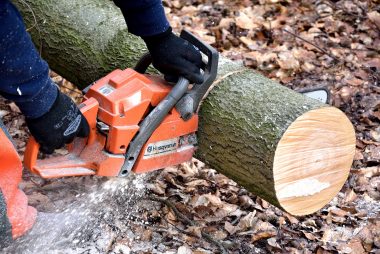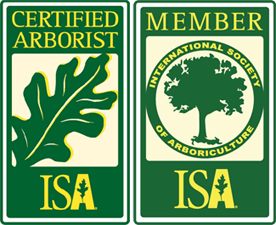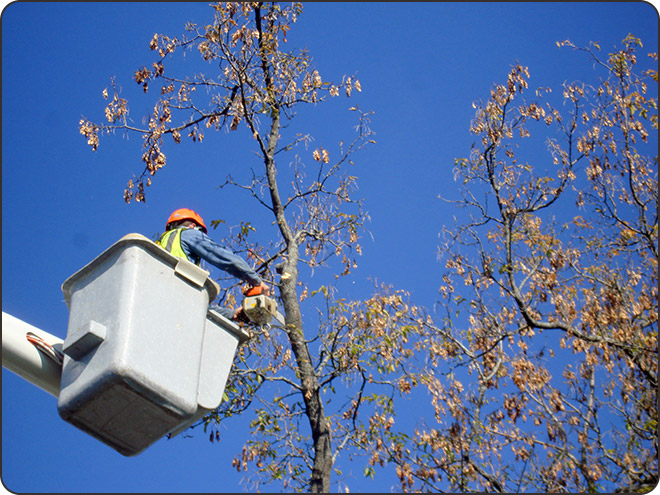Trees can be damaged by high winds, snow, ice and/or other severe weather. Some damage will require immediate attention while others may be dealt with at a later time.
Safety is a primary concern when working with trees. Any work that requires a chain saw or cannot be performed from the ground should be done by a professional tree-care service or arborist. One or both should be consulted when assessing trees for possible removal.
Insurance
In all but life threatening situations, you may want to consider contacting your insurance carrier before any tree work is performed. Most homeowners’ policies will cover at least part of the cost of tree removal if some structural damage has occurred.
Hazardous Trees
Hanging or loosely attached branches and split trunks are obvious safety concerns. They should be dealt with as soon as possible to avoid the possibility of personal injury and/or property damage. Broken but firmly attached branches that pose no immediate danger of falling can be pruned after the more hazardous branches have been removed. Trunks that are split down the middle are very difficult to brace adequately, and should be removed or addressed by a professional tree-care service or arborist.
Leaning Trees
Some storms may not break the above ground portion of the tree but instead might tip the tree over by breaking some of the roots. Trees leaning from root breakage usually do not survive for long. If a tree tips in a storm, it often means the tree had damaged or poorly developed roots prior to falling or leaning over. Larger, more mature trees rarely survive attempts to pull them back into place. These generally should be removed and replaced. Smaller and more recently planted trees have a better chance of surviving if the trees are gently pulled back to their vertical positions. Soil needs to be packed firmly around the root system and watered well. Trees should be staked until the roots have become established again.
Power Lines
Branches hanging over power lines are a major safety hazard from the standpoint of both the person removing the branches, as well as any passers-by. Special training is required to safely prune these branches. Homeowners should not attempt to prune branches near, or laying on, power lines. Contact your local power company or a professional tree-care service trained in electrical line clearance to have these branches removed.
Pruning Broken Limbs and Branches
Safety is the first consideration in removing branches or limbs from storm damaged trees. All branches that are loose should be removed as soon as possible to eliminate the chance of injury or damage if they were to fall. Other branches that are cracked or broken should be removed after the loose branches are gone. A branch (or trunk) that was partially stripped of its bark when an attached branch pulled away, and more than a third of the original circumference of bark is lost, should be removed.
Pruning Don’ts
NEVER top trees! Topping creates serious hazards and dramatically shortens the life of a tree. Branches that sprout from just below the topping cut have very weak attachments and become hazards especially as they grown and increase in weight.
Do not use paint or wound dressing to cover wounds. These materials do not help the tree and actually may interfere with the tree’s wound sealing process.
Prevention of Damage
Some trees are more likely to be damaged in storms. Some species, such as willows and poplars, are softer and are more likely to be injured. Structural defects such as codominant stems, weak branch attachments, and decay are particularly susceptible to storm damage. Most structural defects can be prevented by proper pruning when trees are young. Removing weak branches and correcting poor form when branches are small will minimize the size of the pruning wounds.


